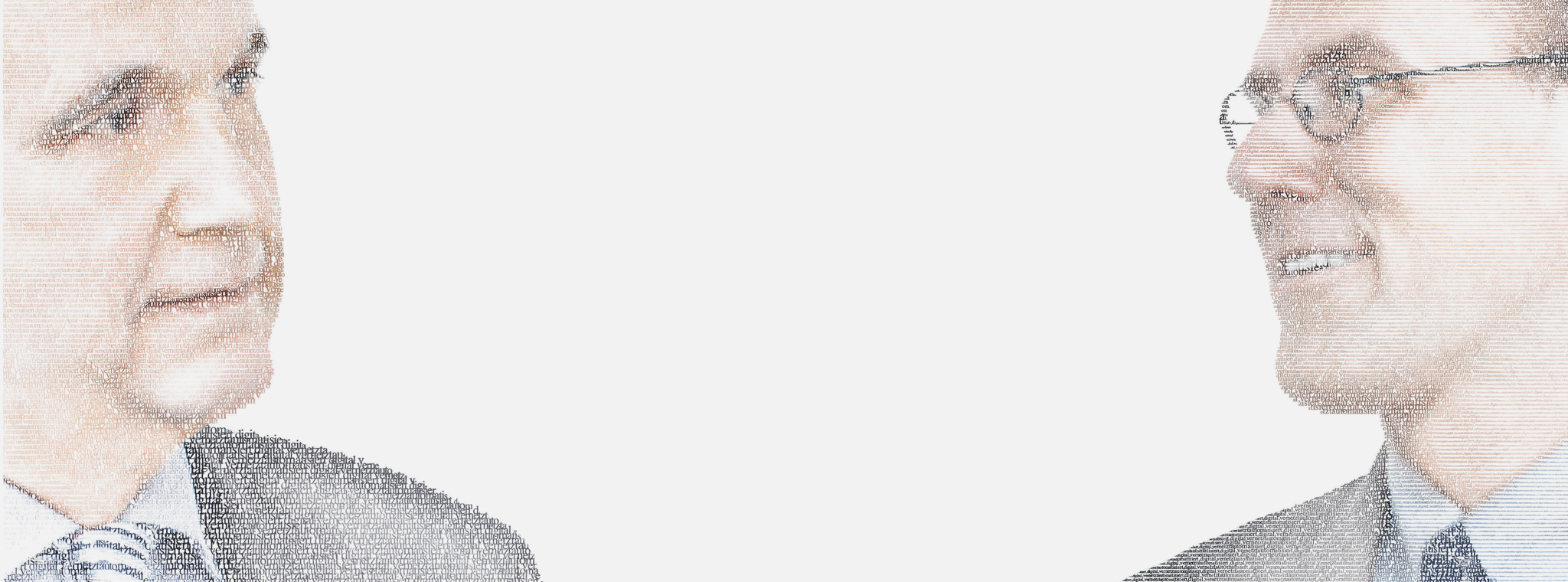Humans + machines

The Volkswagen Group works closely with Stanford University in California to research new technologies. Piloted driving is top of the agenda for Professor Jürgen Leohold, Head of Volkswagen Group Research, and for Stanford Professor Christian Gerdes. Talking to these two experts, it becomes clear that they set their sights on step-by-step automation and self-learning machines.
Professor Jürgen Leohold
Professor Christian Gerdes
Will we soon see cars driving autonomously on our roads, without the driver lifting a finger?
Professor Jürgen Leohold
Piloted driving will soon be perfectly normal in heavy highway traffic. And the automobile of the future will also look for its own parking space once the driver has got out. What we will definitely not see, however, at least not in the next ten years, are self-driving cars capable of navigating every traffic situation fully automatically. We are not talking about a revolution here, but rather the systematic evolutionary development of driver assistance systems that are already fitted into our vehicles today.
Professor Christian Gerdes
After all, we shouldn’t forget the amazing cognitive achievements that human beings are capable of, particularly in complex situations. We engineers can’t duplicate that yet, so we have to begin by simplifying the problem. We can do this, for instance, by limiting the car to low speeds or certain stretches of road or automating individual driving tasks step by step.
Professor Jürgen Leohold
Of course, we researchers are also working on the underlying requirements for automated driving in urban traffic. This sort of vehicle would have to be able to deal with every situation that might arise in real life – not only in fine weather, but also when it snows, for instance. What’s more, machines have to learn the kind of communication that we humans take for granted, for example how we use eye contact and gestures to signal to each other who should move first into a crossing.
Are customers really ready to let a machine take the wheel?
Professor Christian Gerdes
I am convinced that everybody would be happy to hand over the steering wheel in certain situations, such as stop-and-go traffic. We just have to make sure that people on board an automated vehicle feel safe.
Professor Jürgen Leohold
That’s why we are conducting intensive research into how the display and controls in these vehicles should look. They should be as simple and intuitive as possible. The driver must always be able to tell from the display exactly what the vehicle is doing at that moment. For example, all maneuvers will have to be indicated before they are carried out.
Professor Christian Gerdes
Incidentally, the Volkswagen Electronics Research Laboratory (ERL) of the Volkswagen Group of America in California and Stanford University are also looking together at how automated driving should feel. This includes analyzing what professional chauffeurs do to make their customers feel safe.
Professor Jürgen Leohold
We are looking not only at acoustic or optical signals, but also at how customers experience longitudinal and lateral acceleration. This will determine whether people trust a technical system or not. It may even be possible for an autopilot to adapt itself to a customer’s individual driving style.
Is automated driving safer?
Professor Jürgen Leohold
We are only automating those functions where we can say with absolute certainty that this will improve traffic safety – for all road users.
Professor Christian Gerdes
We believe that, one day, it will be possible to design vehicles that avoid every accident, at least as far as the physics will allow. Much lighter vehicles could then be designed because they would need fewer safety features, which in turn would cut fuel consumption.
Professor Jürgen Leohold
A great deal of research and development is still necessary, however, for example in the areas of sensor technology, software and testing methods.
What role does networking play in automated driving?
Professor Jürgen Leohold
An automated vehicle is always also a networked vehicle, for example because it has to be able to access the latest map updates at any time. But networking can also help automobiles to make the right decisions within milliseconds, because they can take into account information from other vehicles.
Professor Christian Gerdes
This sort of self-learning computer program is no longer science fiction. The question for us as researchers is how to organize this learning. In the future, automobiles will probably be connected to a server that will allow them to benefit from the experiences of other vehicles linked up to the same network.
What is Volkswagen’s approach to data protection?
Professor Christian Gerdes
Many people are prepared to supply certain information in return for an easier life or real added value. We see that, for example, with social media users.
Professor Jürgen Leohold
What’s important for Volkswagen is that customers can decide for themselves whether they are willing to supply information from their vehicle, as well as how much information they make available. It’s about transparency and trust. Anonymized vehicle data will be used exclusively to improve traffic safety. The car won’t turn into a hungry data monster.
Professor Jürgen Leohold
has been Head of Volkswagen Group Research since 2006. The electrical engineering graduate began his career at Volkswagen in 1987, initially holding various managerial positions in the Electrics/Electronics Development division. Between 2002 and 2005, Professor Leohold resumed his academic career, serving as a professor at the Institute for Vehicle Systems and Principles of Electrical Engineering at the University of Kassel.
Professor Christian Gerdes
is Professor of Mechanical Engineering at Stanford University, where his positions include Director of the Dynamic Design Lab, which cooperates closely with Volkswagen Group of America’s Electronics Research Laboratory in California. Gerdes is regarded by the automotive industry as one of the leading experts in automated driving. His doctoral thesis written back in 1996 was already devoted to this topic.
PHOTOGRAPHY
Georg Roske